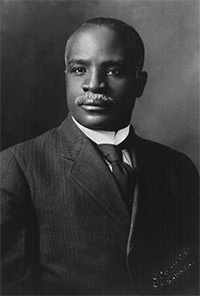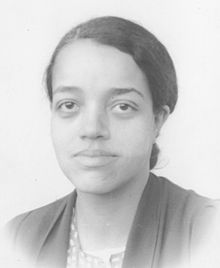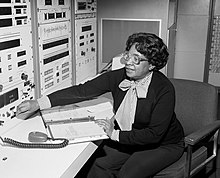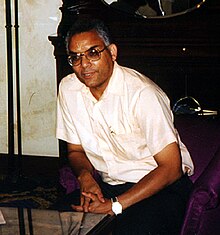List of African-American mathematicians
The bestselling book and film, Hidden Figures, celebrated the role of African-American women mathematicians in the space race, and the barriers they had to overcome to study and pursue a career in mathematics and related fields.
[1] Although much of African Americans' other achievements in careers in mathematical science, in research, education, and applied fields have also been "hidden", the community of mathematicians has been growing.
[4] 1895: Joseph Carter Corbin, president of Branch Normal College (now University of Arkansas at Pine Bluff), published his first problem in American Mathematical Monthly.
[6] 1929: Dudley Weldon Woodard is the first African-American mathematician known to publish in a mathematics journal,[7] with the article "On two-dimensional analysis situs with special reference to the Jordan curve-theorem" in Fundamenta Mathematicae.
[6] 1951: The MAA Board of Governors adopted a resolution to conduct their scientific and business meetings, and social gatherings "without discrimination as to race, creed, or color".
[12][16] 1982: Civil rights leader, Bob Moses (Student Nonviolent Coordinating Committee), used his MacArthur Fellowship to start the Algebra Project, a national mathematics literacy program for high schools.
[17] 1988: The MAA established a task force that led to the formation in 1990 of SUMMA, a program for the Strengthening of Underrepresented Minority Mathematics Achievement.
[30] 2016: Hidden Figures,[1] by Margot Lee Shetterley, is published, going on to win multiple awards and reach number 1 on the New York Times bestseller list.
2017: The film adaptation, Hidden Figures, is nominated for best movie at the Academy Awards, and Katherine Johnson makes an appearance at the ceremony.

















